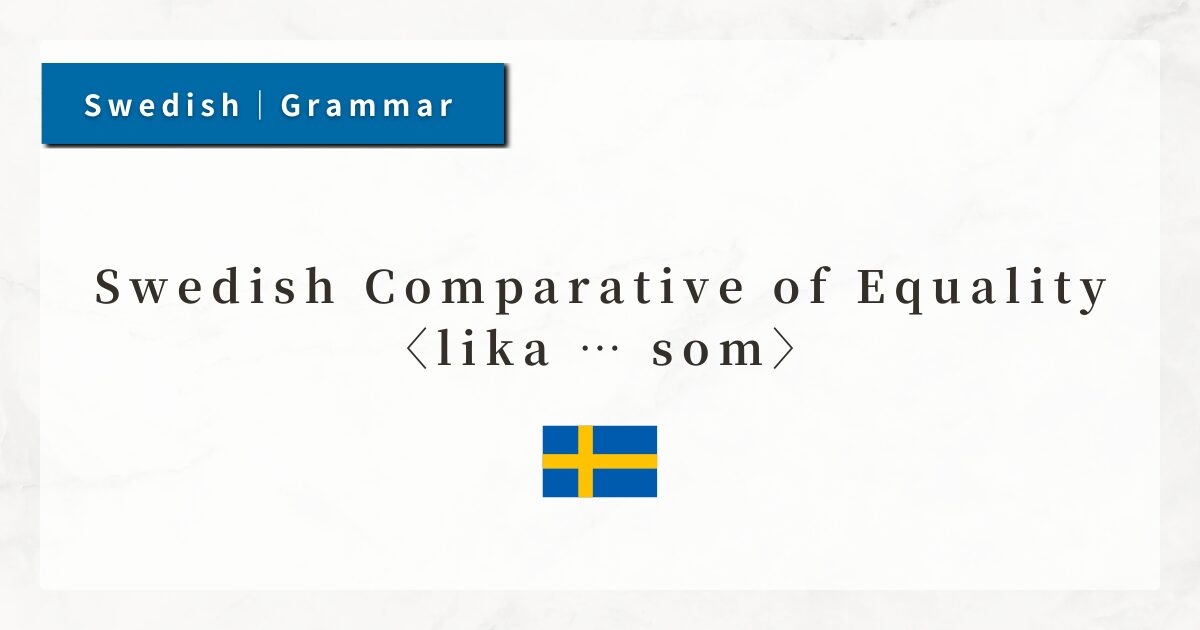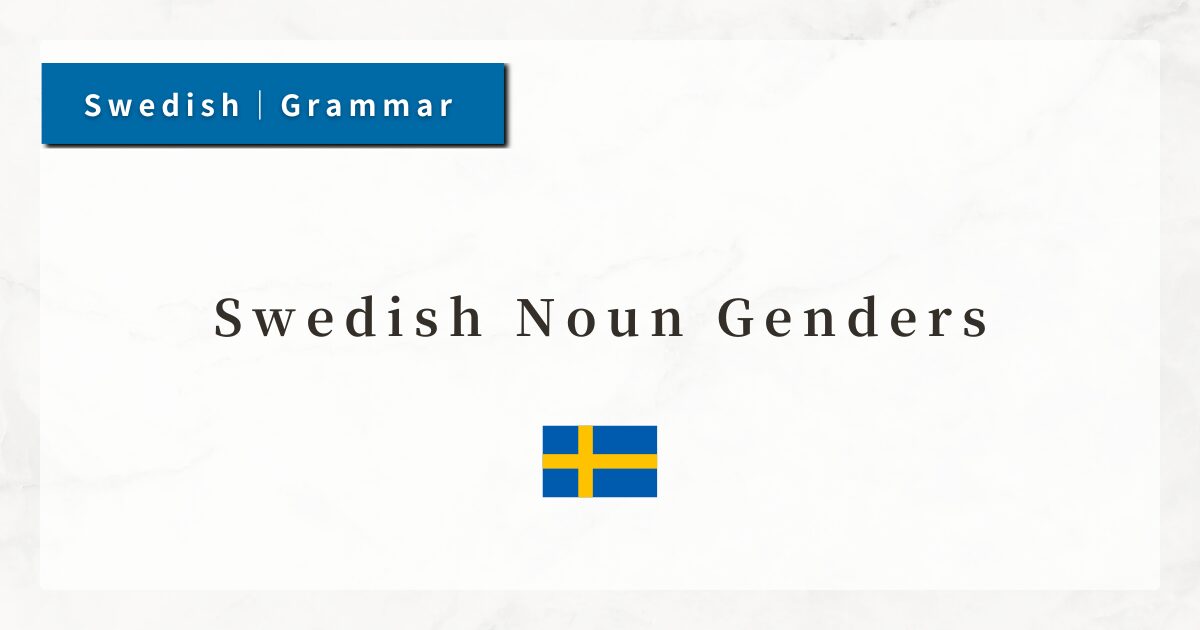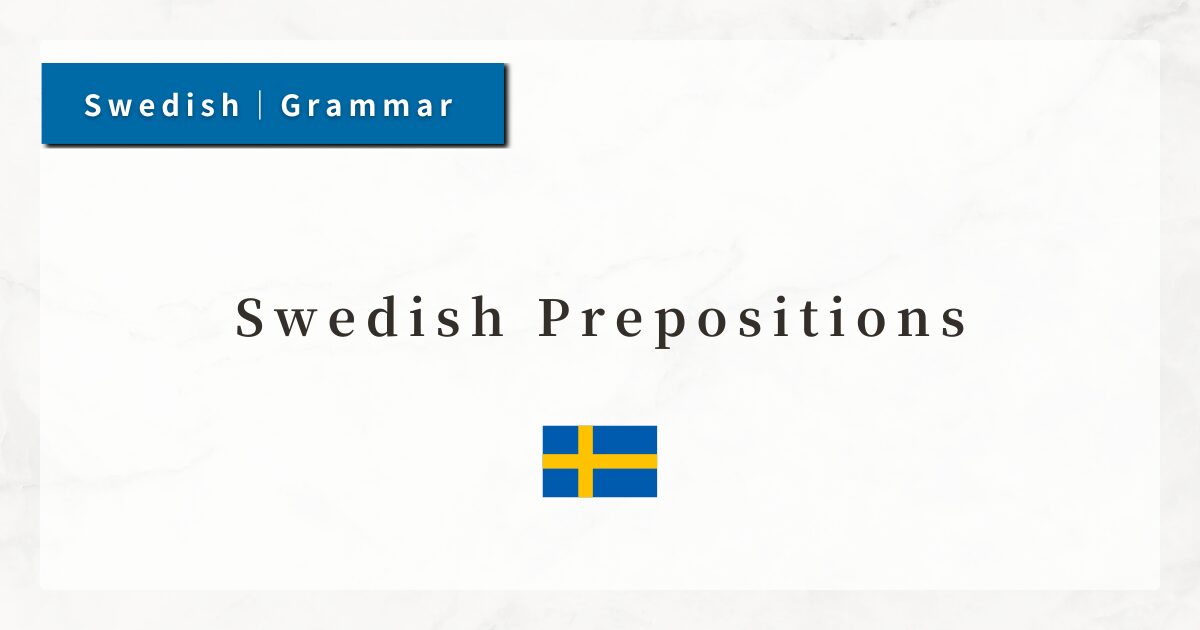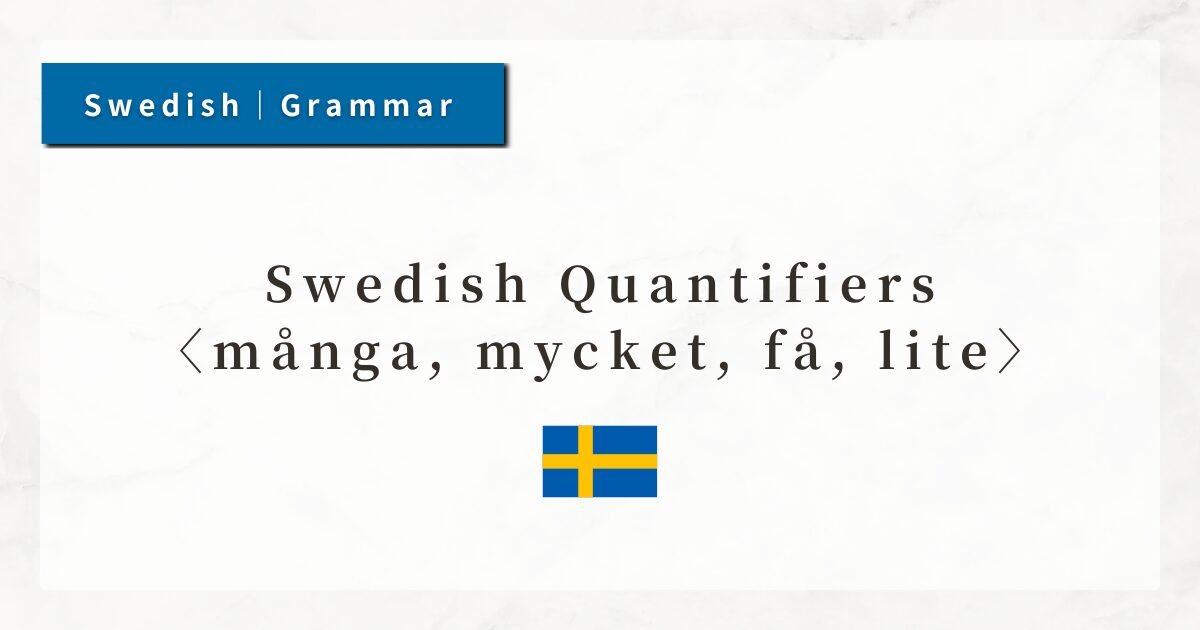#37 Swedish Comparative of Equality (lika … som)|Usage and Examples

In Swedish, when you want to say “as … as …” (meaning “the same degree of something as”), you use the structure lika ~ som.
This corresponds to the English expression “as … as …” and is used to indicate that two things are equal in some quality or degree.
In this lesson, I will explain the structure of equative comparisons in Swedish, how to use adjectives and adverbs, how to form negatives, and the nuances this expression carries.
1. Basic Structure: lika ~ som
The structure of equative comparison in Swedish is:
- Subject + Verb + lika + Adjective/Adverb + som + Comparison Target
This expresses the meaning: “A is as … as B.”
- Anna är lika lång som Maria.
(Anna is as tall as Maria.) - Det här huset är lika stort som det där.
(This house is as big as that one.)
Here, lika is placed before the adjective or adverb, followed by som + comparison target.
2. Adjectives vs. Adverbs
In Swedish, adjectives describe nouns, while adverbs describe verbs.
When making a comparison, it is important to know whether the word being compared is an adjective (a quality of a person/thing) or an adverb (the manner of an action).
2-1. Using Adjectives (describing a noun’s state)
- Han är lika stark som sin pappa.
(He is as strong as his father.) - Bilen är lika dyr som den andra.
(This car is as expensive as the other one.)
Adjectives are used when comparing people’s or objects’ qualities and states.
2-2. Using Adverbs (describing an action)
- Hon sjunger lika vackert som en fågel.
(She sings as beautifully as a bird.) - Vi jobbar lika hårt som de gör.
(We work as hard as they do.)
Adverbs are used when comparing how an action is performed, such as speed, strength, or manner.
3. Negative Equative Comparison
To say “not as … as …”, insert inte before lika.
- Jag är inte lika trött som igår.
(I am not as tired as yesterday.) - Den här väskan är inte lika dyr som den där.
(This bag is not as expensive as that one.) - Hon springer inte lika snabbt som förut.
(She doesn’t run as fast as before.)
The rule is that inte is placed directly before lika.
4. The Nuance of Equative Comparison
Equative comparisons (lika ~ som) present two things as equal, avoiding direct superiority or inferiority. This gives the expression a softer and more polite tone.
- Han är inte lika bra som du.
(He is not as good as you.)
→ a softer, less harsh way of denying ability - Hon är lika duktig som sin syster.
(She is as talented as her sister.)
→ a polite way to give equal praise
Compared to saying “better” or “worse,” using lika ~ som sounds gentler and contributes to smoother communication.
5. Summary
- Equative comparison (lika ~ som) expresses equality in degree between two things.
- Adjectives are used to compare qualities or states of nouns; adverbs are used to compare actions or manners.
- The negative form is inte lika ~ som, meaning “not as … as …”.
- This structure allows you to make comparisons in a respectful and softer way.




